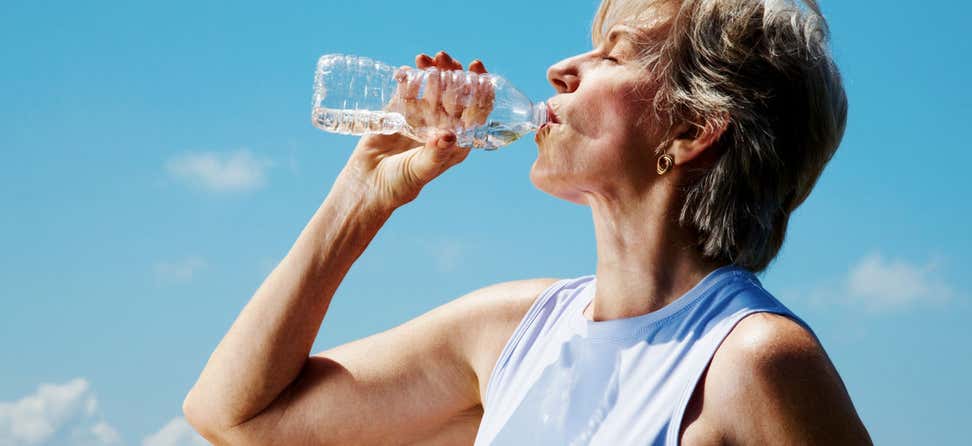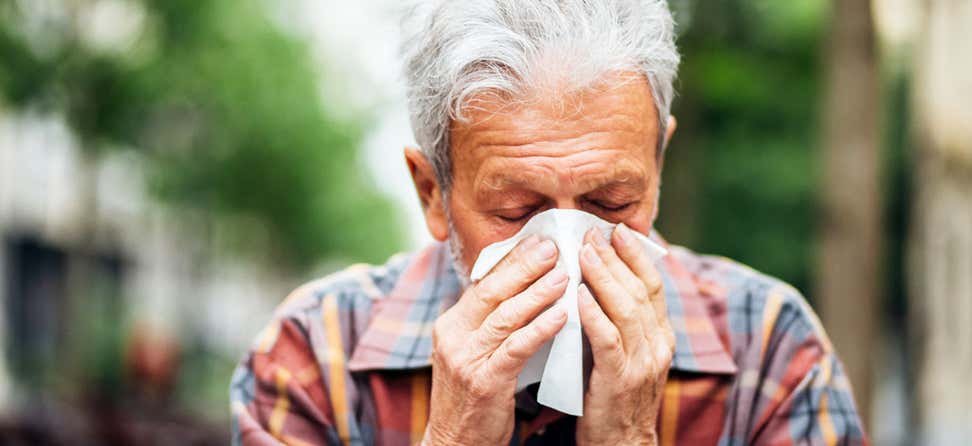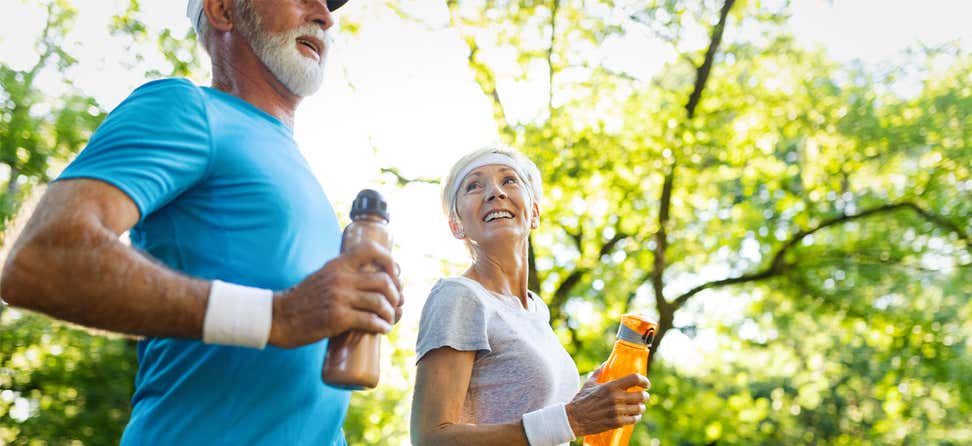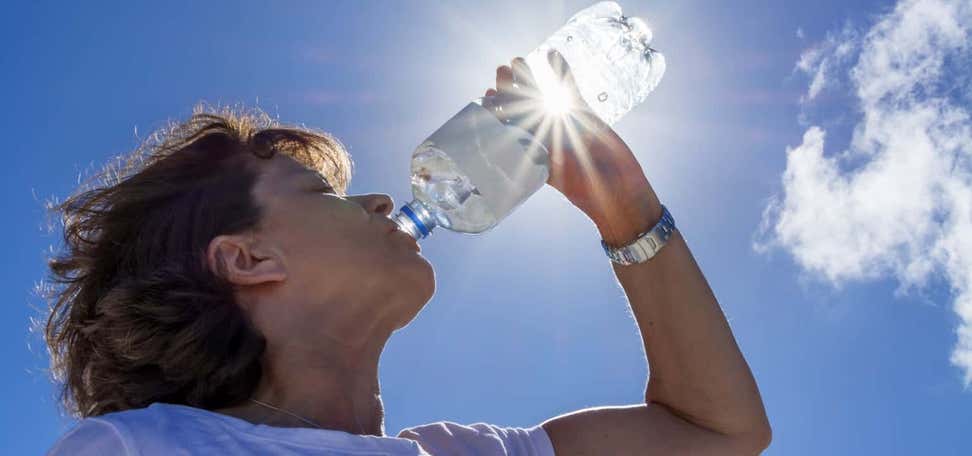Key Takeaways
There is plenty of misinformation around hydration, which can make it difficult to take the steps you need to take to stay healthy.
A lack of thirst doesn’t mean you’re not dehydrated. That’s why it’s important to know the signs of not getting enough fluids.
There’s no one-size-fits-all rule for how much water to drink each day. It depends on factors such as your age, health, climate, and more.
"Stay hydrated" has become a familiar piece of health advice in recent years. But what exactly does that mean for older adults? With misinformation everywhere, it can be hard to distinguish fact from fiction. To provide more clarity on this important topic, we've debunked some common hydration myths below.
Myth #1: If you’re not thirsty, you’re probably not dehydrated.
Fact: Thirst does not always correlate with hydration. Fluid levels can drop by 2-3% of your body weight before you even realize you’re thirsty. This is especially true as we age, since our natural thirst tends to diminish over time.
A better way to tell if you’re drinking enough fluid is to check the color of your urine. If it’s pale in color and clear, you are likely well-hydrated. If it’s dark-colored with brown tones, you may be dehydrated.
Since certain vitamin supplements and a diet high in protein can also cause urine color changes, an even more reliable indicator of hydration is the volume of your urine. If your water intake is sufficient, you should be going to the bathroom once every few hours. If you find yourself seldom making a visit to the restroom, you probably aren’t drinking enough.
Myth #2: You can't drink too much water—more is always better.
Fact: It is possible to overdo your water intake and drink more than your body can flush out. This is called hyponatremia (also known as water toxicity), a condition in which sodium levels in the body are dangerously low. Hyponatremia can cause a host of physical symptoms ranging from confusion, nausea, and headaches to convulsions—and can even be fatal in some cases. There are certain people who are more prone to hyponatremia than others, including those with congestive heart failure, kidney failure, or Addison's disease. Endurance athletes are also susceptible, especially novice runners.
The good news? If you don't have any of the risk factors mentioned above, water toxicity is usually not a serious concern. This is because in healthy people, the kidneys are able to excrete extra fluids in order to maintain a proper balance of electrolytes.
Myth #3: Sports drinks are the best choice to rehydrate after intense exercise.
Fact: TV commercials would have us believe that electrolyte-enhanced sports drinks are the best way to refuel your body after activity. But these popular beverages often contain ingredients that aren't so good for our health. These include hydrogenated oils, which can be harmful to the thyroid. Many sports drinks also contain high-fructose corn syrup (HFCS) and large amounts of sugar, which can cause dramatic spikes in blood sugar levels.
Do sports drinks have a place in healthy hydration? If you engage in long, strenuous workouts (60 minutes or more), these fortified beverages can help replenish the fluid and electrolytes your body loses through heavy perspiration. Be sure to read nutrition labels carefully. Choose products with no artificial additives and opt for low-sugar versions, particularly if you have diabetes.
For shorter activity sessions, water is best for helping your body bounce back. If you want a bit of added flavor, try H2O infused with fresh lemons, watermelon, mint leaves, cucumbers, or berries.
Myth #4: Drinking liquids is the only way to stay hydrated.
Fact: While drinking water all day is a great habit, it's not the only way to give your body what it needs. In fact, about 20% of your fluid is obtained through foods with high water content. These include cucumbers, celery, strawberries, grapefruit, spinach, and watermelon. Soups, broths, and stews are another practical (and tasty) way to boost your fluid intake, especially in the colder weather months. If you’re watching your sodium, be sure to choose low-sodium versions.
Foods can also have the opposite effect on your fluid levels. Salty, high-sodium fare such as potato chips and packaged meals can contribute to dehydration by prompting the body to draw water out of its cells. The Food and Nutrition Board recommends a limit of 1,300 milligrams of sodium daily for ages 51-70 and 1,200 milligrams per day after age 70.
Myth #5: Everyone should drink 8 glasses of water a day.
Fact: Each person's hydration needs are unique, based on a number of factors such as age, activity level, diet, health, and any medications being taken. The climate you live in also matters; those who live in hot, humid locations will typically need to consume more water. In general, you should take one-third of your body weight and drink that number of ounces in fluids daily. For example, if you weigh 150 pounds, aim to drink 50 oz. of water.
Talk to your healthcare provider to determine an appropriate daily fluid-intake goal for you. They can review your medical history with you as well as any over-the-counter or prescription medications you’re currently taking. Certain medications can increase dehydration risk, including laxatives, diuretics, chemotherapy drugs, and oral medications for type 2 diabetes.
Myth #6: Coffee is dehydrating.
Fact: For a long time, the common consensus was that caffeine acts like a diuretic inside our body and robs it of precious fluid. But in recent years, this notion has been debunked. One study found no evidence of dehydration with moderate consumption of caffeinated coffee—up to 4 cups a day. In fact, if you're a regular java drinker, it can be counted toward your daily fluid intake.
Myth #7: You can remedy dehydration simply by drinking more water.
Fact: Treating dehydration in older adults depends on the individual and their symptoms. Generally speaking:
- Mild dehydration symptoms (such as dry mouth, fatigue, headaches, and muscle cramps) can usually be treated with water or a drink that contains electrolytes such as sodium and potassium. Older adults with mild dehydration will usually make a visible recovery within 5-10 minutes of drinking fluids.
- Moderate to serious dehydration symptoms (such as confusion, dry and sunken eyes, severe muscle cramps, low blood pressure, and mobility problems) may require the administration of intravenous (IV) fluids or a subcutaneous infusion of fluids. In cases of very severe dehydration, additional interventions (e.g. short-term dialysis) may be required.
Read more about the importance of hydration for older adults.










